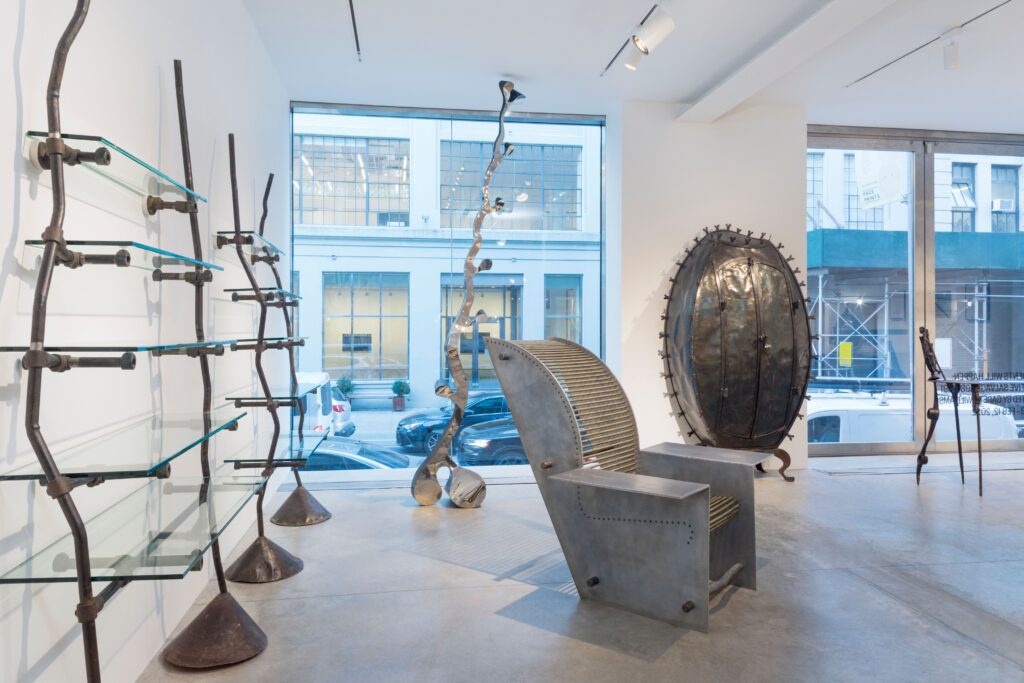
If we look at the evolution of design history in the last 50 years, we can identify several key movements—minimalism, Space-Age, Postmodernism, Pop—but none was as exciting, as full of surprises, and as anti-establishment, as the British design movement of the 80s. It was long before the market for contemporary design was born, and before platforms to showcase avant-garde design were established. During this decade—which would bring us the yuppie, and the launch of the Sony Walkman—a small group of entrepreneurial anarchists created an entirely new type of furniture that looked like nothing that had ever been done before. While the group at this time was on the periphery, its lasting influence is seen in contemporary design to this day. This movement is the subject of a new exhibition, Accidents Will Happen: Creative Salvage, 1981–1991, curated by Gareth Williams at Friedman Benda. This small but spectacular exhibition illuminating the heretofore untold story of this historical moment when everything changed.
This movement was the outcome of the political and cultural landscape of its time. Margaret Thatcher won in a landslide, and mass unemployment incited protests against her Conservative government. The triumph of Punk, not just as an aggressive form of rock music, but also as a style and mode that rejected mainstream culture, was, at its core, as well as the do-it-yourself movement.
This type of historical exhibition demonstrates the new role of the design gallery to educate the public in design culture, to resurrect the forgotten, to support scholarship, and to reveal inspiration in constructing taste. It consists of some iconic pieces by the heroes of the Movement—Ron Arad, André Dubreuil, Mark Brazier-Jones, Tom Dixon, André Dubreuil, Danny Lane, Jon Mills and Deborah Thomas – all designers and makers who created personal pieces filled with narrative, each one a full representation of the designer’s individual aesthetic. Yet, the exhibition presents a clear, stylistic narrative and language which turned this into a ‘movement.’ The pieces on display are all provocative and disruptive, and challenge traditional definitions of good taste. Just like its contemporary, Punk, which came to confront traditions in British society, the furniture is sensuous and trashy at the same time, all crafted by hand in low and scrap materials: found objects, reclaimed marble, bicycle tubes, fragments of glass, concrete, rough steel, metal wires, cool and stylish objects, which under the hands of their makers became startle objects, which are beyond the everyday, because they rejected the decade’s culture of consumerism.
They were not all British, but they came to London and participated in this radical movement that changed the history of furniture. They were to the furniture design what Jean Paul Gaultier and Claude Montana were to fashion of that time: introducing a sense of aggression, filled with contradictions and complexity. Their movement was not unlike contemporary architects who dabbled in Deconstructivism, giving the impression of fragmentation and absence of symmetry and continuity, often impractical, but always unconventional and intriguing. They created with furniture what their peers created in New Wave Music. But it is hard to believe that the 80s are history.
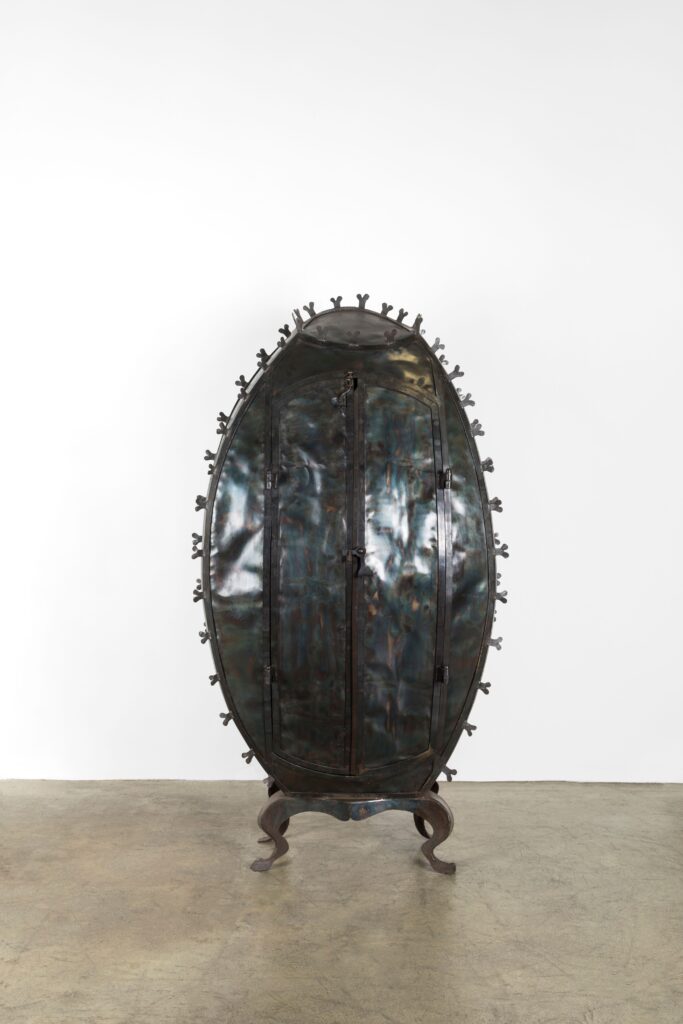
Dog Bollock Wardrobe, 1988
Oil and acrylic on graphite on linen
Estimated Dimensions:
86.75 x 47.25 x 23.75 inches
220 x 120 x 60 cm
Unique
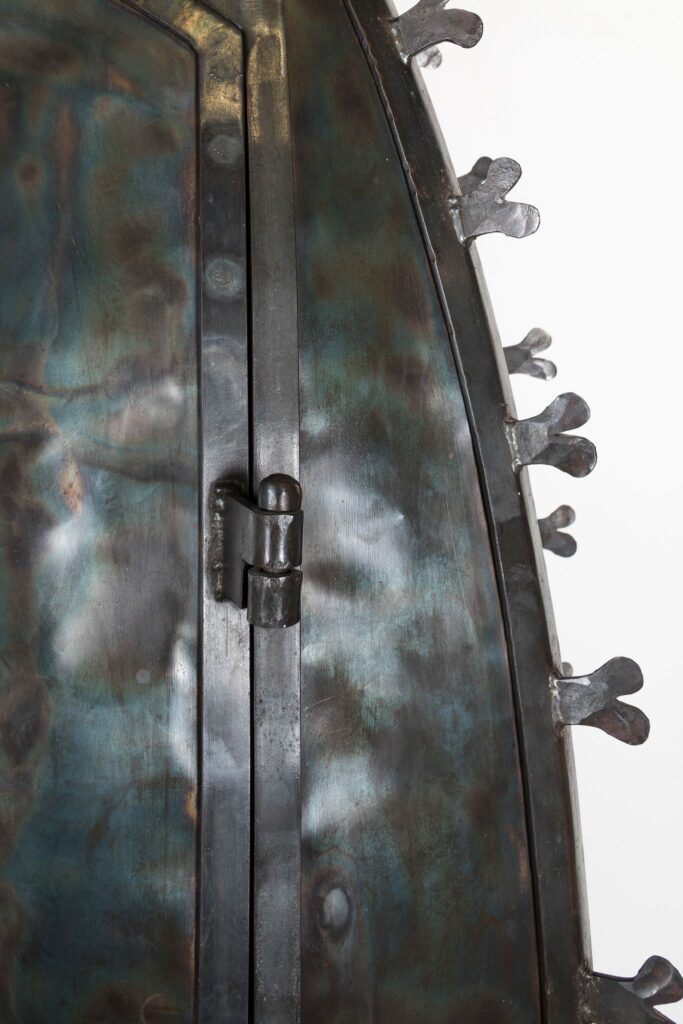
Dog Bollock Wardrobe, 1988
Oil and acrylic on graphite on linen
Estimated Dimensions:
86.75 x 47.25 x 23.75 inches
220 x 120 x 60 cm
Unique
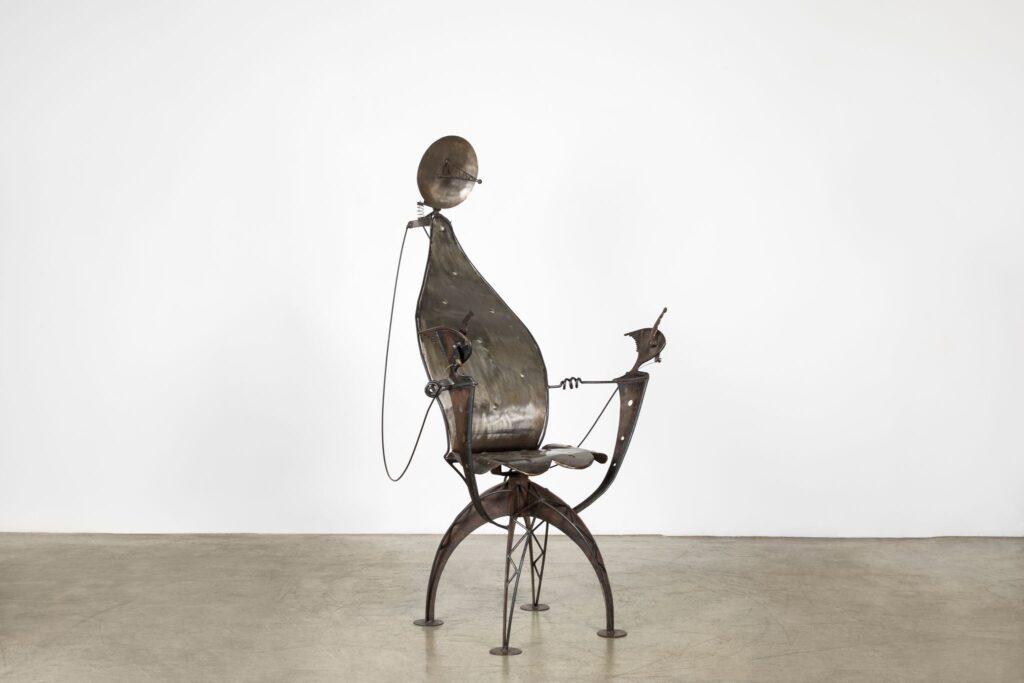
Dan Dare Chair, c. 1987
Forged and welded steel with multidirectional
radar dish
60 x 48 x 48 inches
152.4 x 121.9 x 121.9 cm
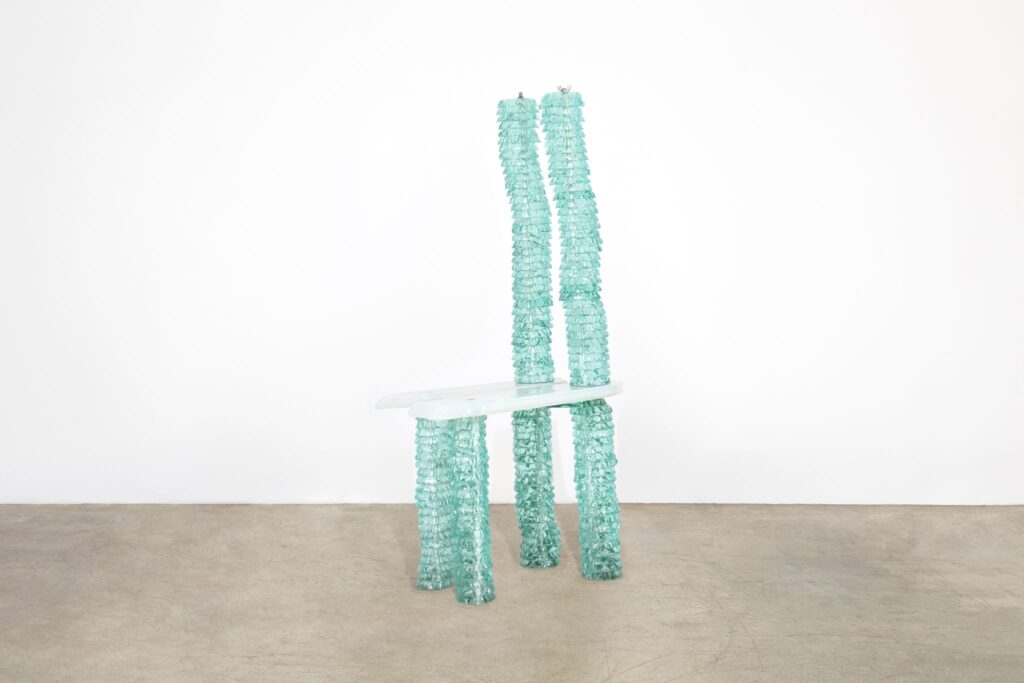
Danny Lane [American, b. 1955]
Solomon Chair, 1988
Stacked hammer chipped polished glass,
opaque glass and steel rods
47.25 x 15.75 x 23.75 inches
120 x 40 x 60 cm
Etched: Danny Lane 1988 2-10
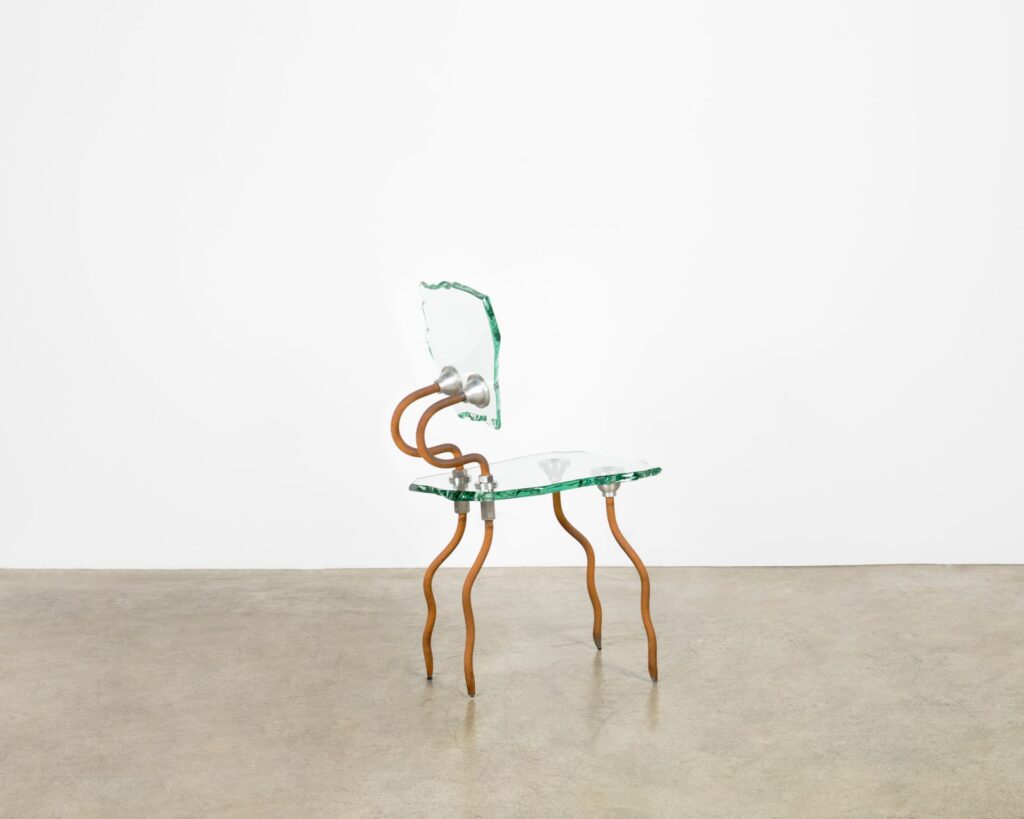
Etruscan Chair, 1988
Sand blasted and rusted steel, forged
stainless steel and hammer chipped
polished glass
35 x 16 x 24 inches
88.9 x 40.6 x 61 cm
Etched Danny Lane 12/100 88 RF
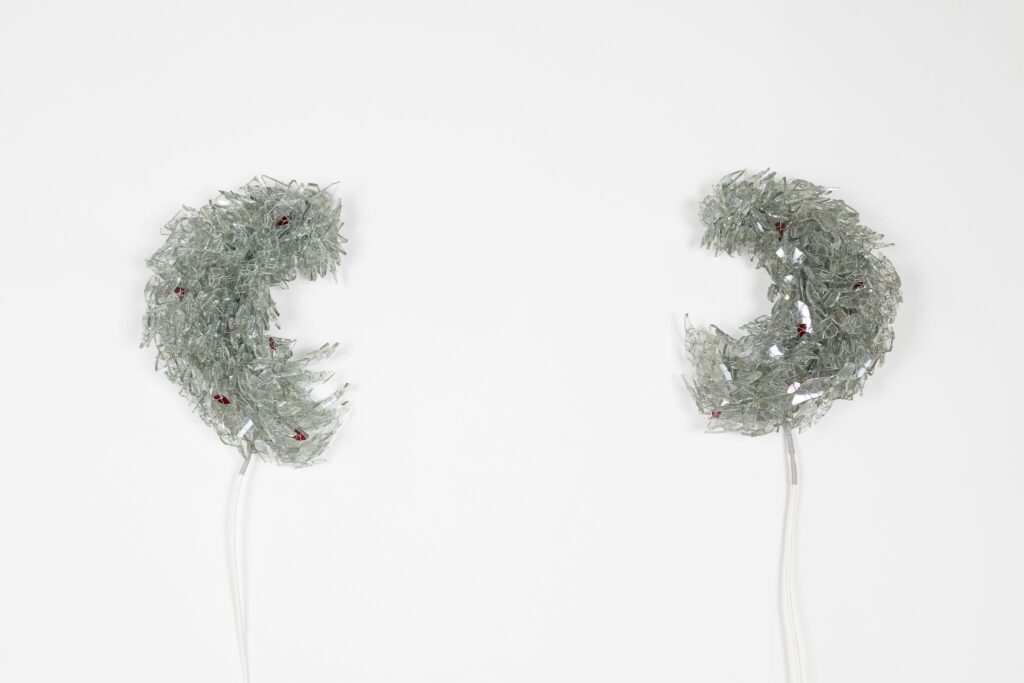
Pair of Forest Breeze Wall Lights, c. 1991
Clear and red glass shards suspended on
wire
16.5 x 13 x 5 inches
42 x 33 x 12.5 cm
Unique
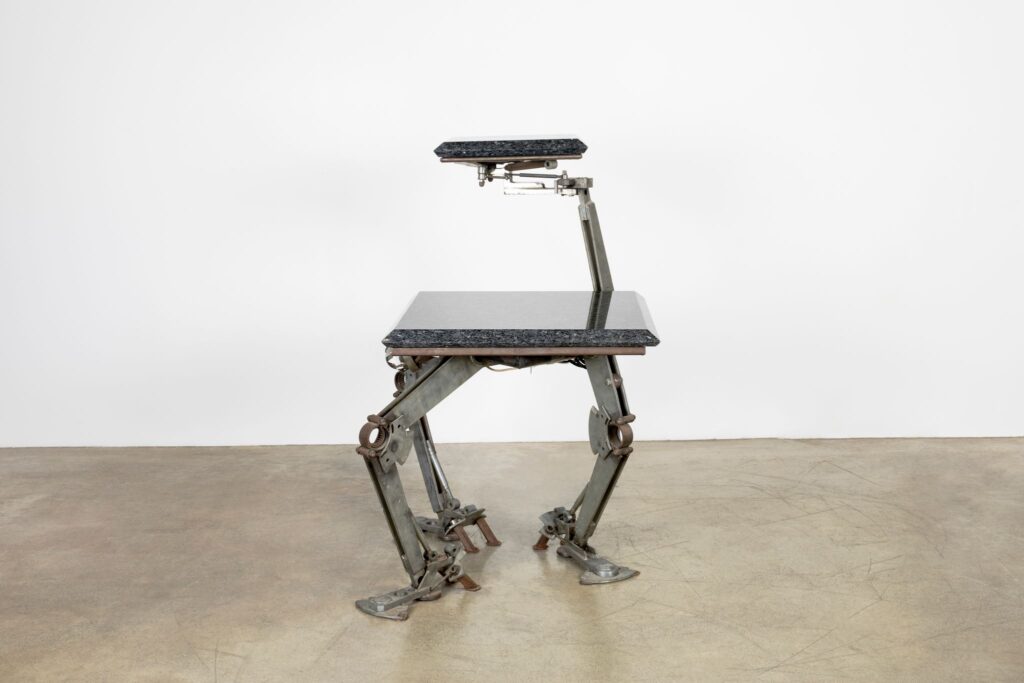
1956]
Robot Table, 1989 – 1990
Granite, metal, glass and integral light
fitting
47.75 x 28 x 29.25 inches
121 x 71 x 74 cm
Unique
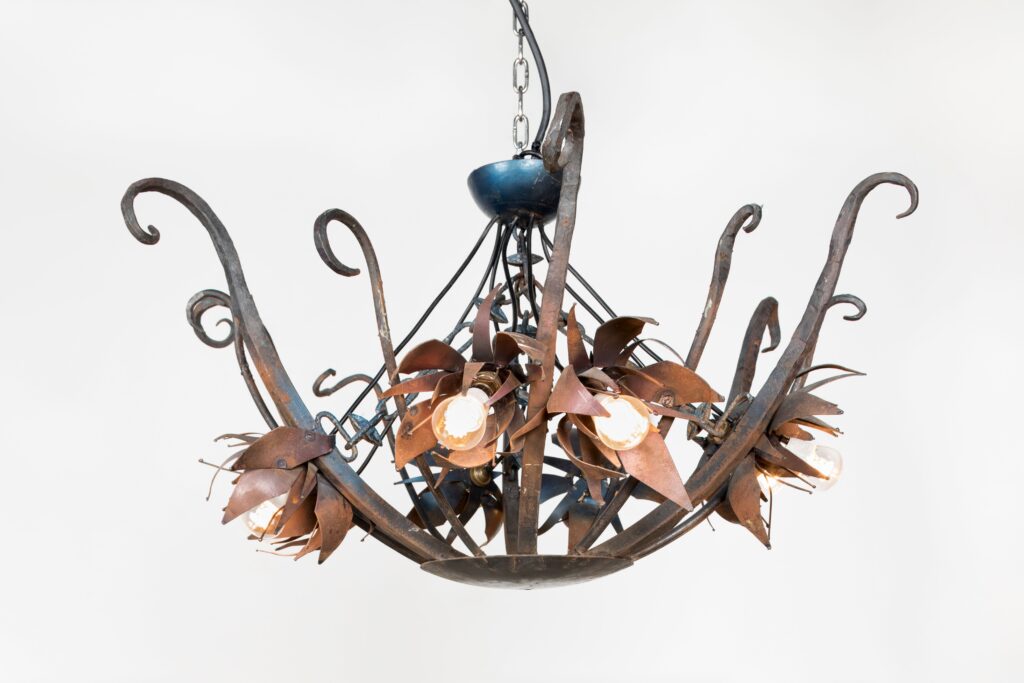
1956]
Rococo Chandelier, c. 1988
Welded steel
17 x 36 x 36 inches
43.2 x 91.4 x 91.4 cm
Unique
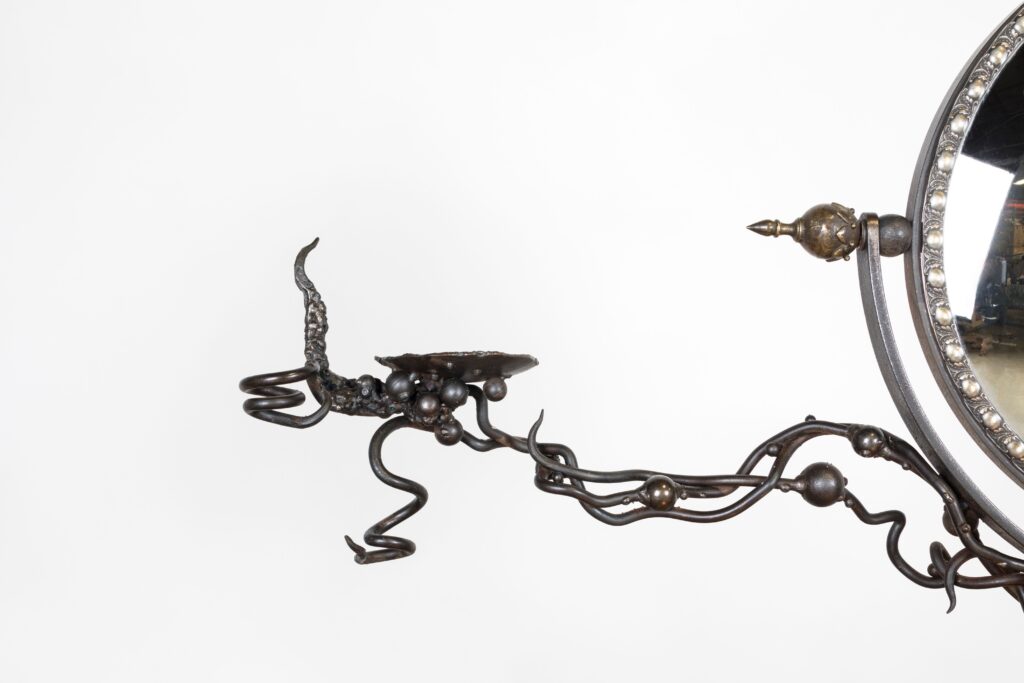
1956]
Dressing Table, 1988
Steel, copper, bronze and glass
63 x 53 x 14 inches
160 x 134.75 x 35.75 cm
Unique
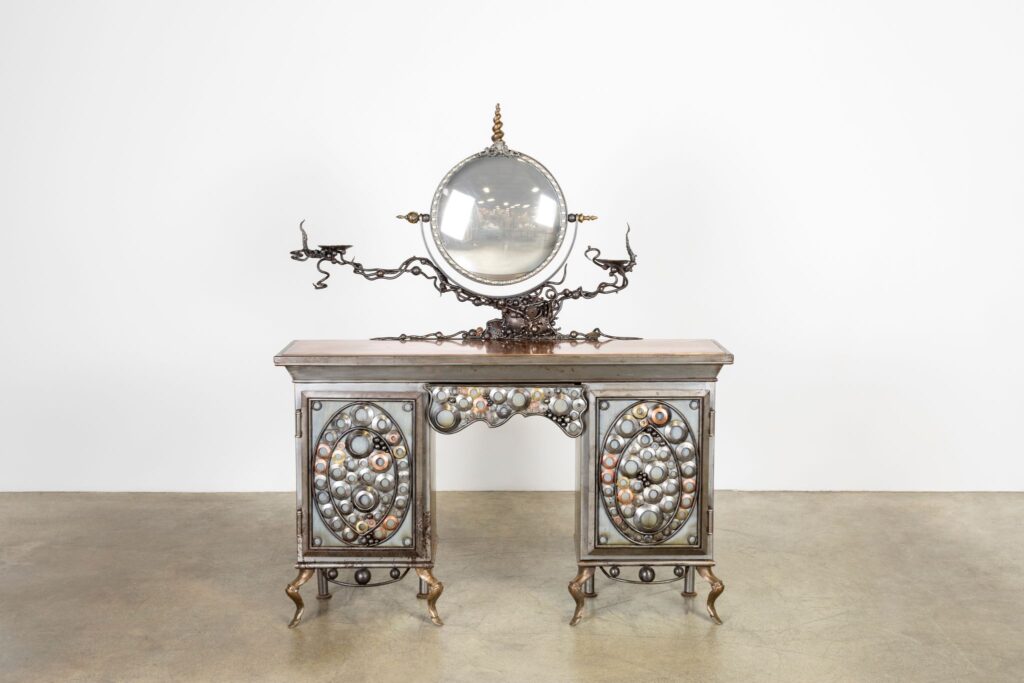
1956]
Dressing Table, 1988
Steel, copper, bronze and glass
63 x 53 x 14 inches
160 x 134.75 x 35.75 cm
Unique
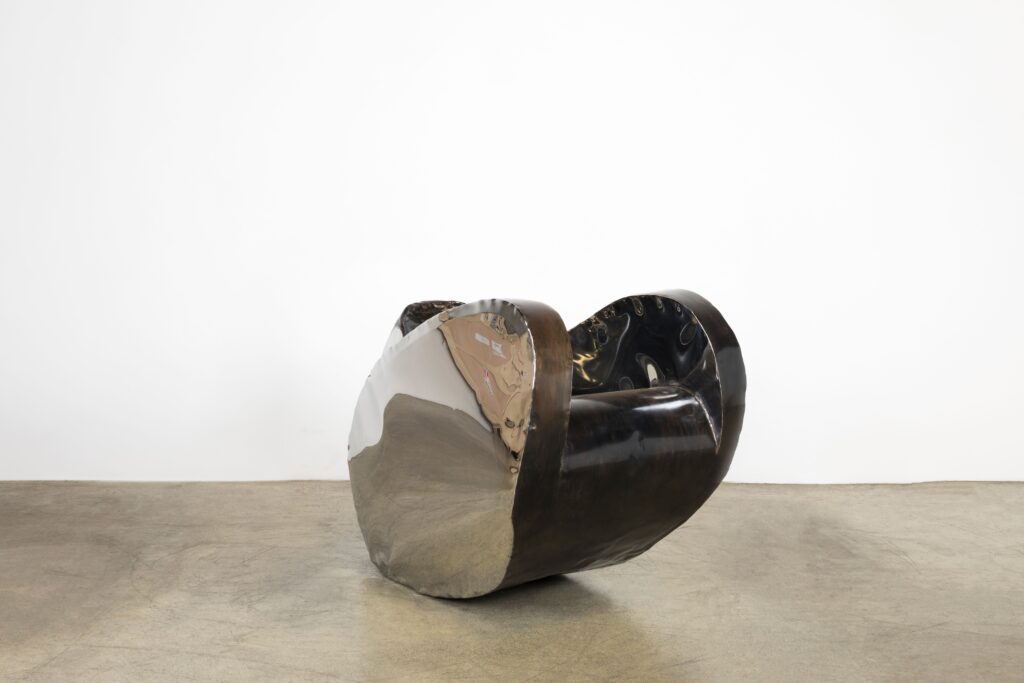
Rolling Volume Prototype, 1989
Polished patinated steel
30.75 x 35.5 x 37.375 inches
78.1 x 90.2 x 94.9 cm
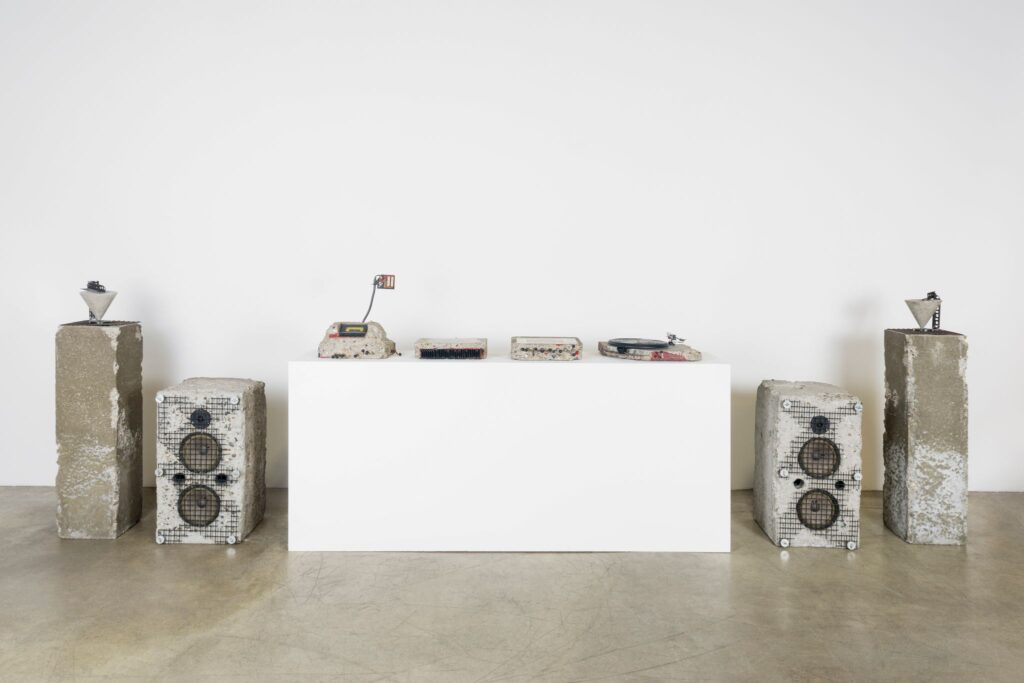
Concrete Stereo, 1983
Concrete, rubber, electrical components,
steel rods, acrylic
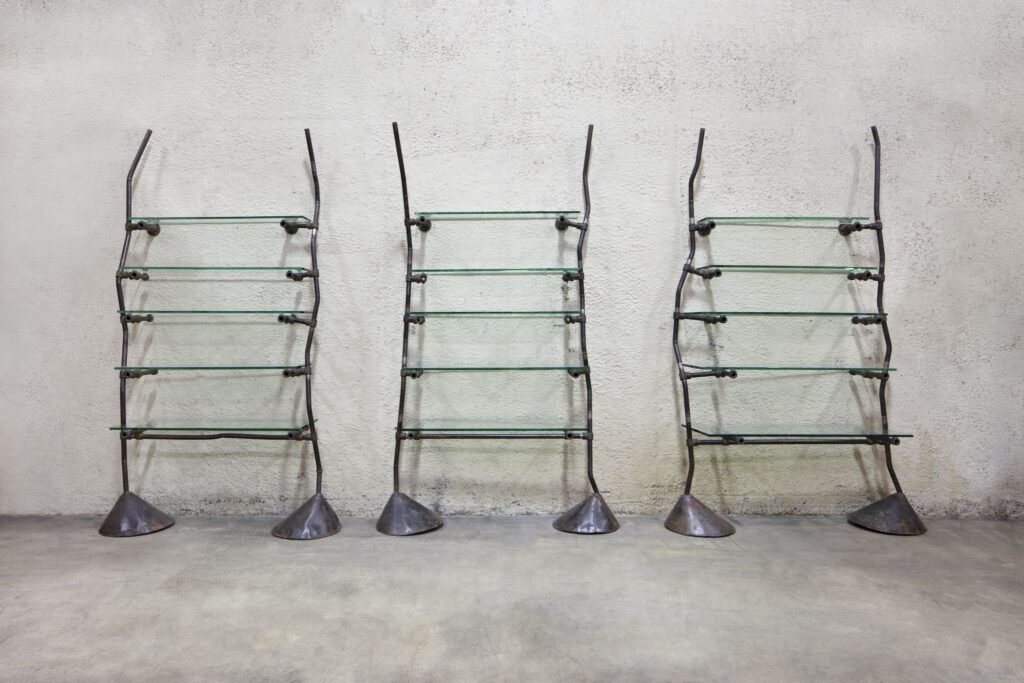
Bookcase, 1983
Patinated steel, cast iron steel, glass
88.25 x 56 x 15.75 inches
224 x 142 x 40 cm
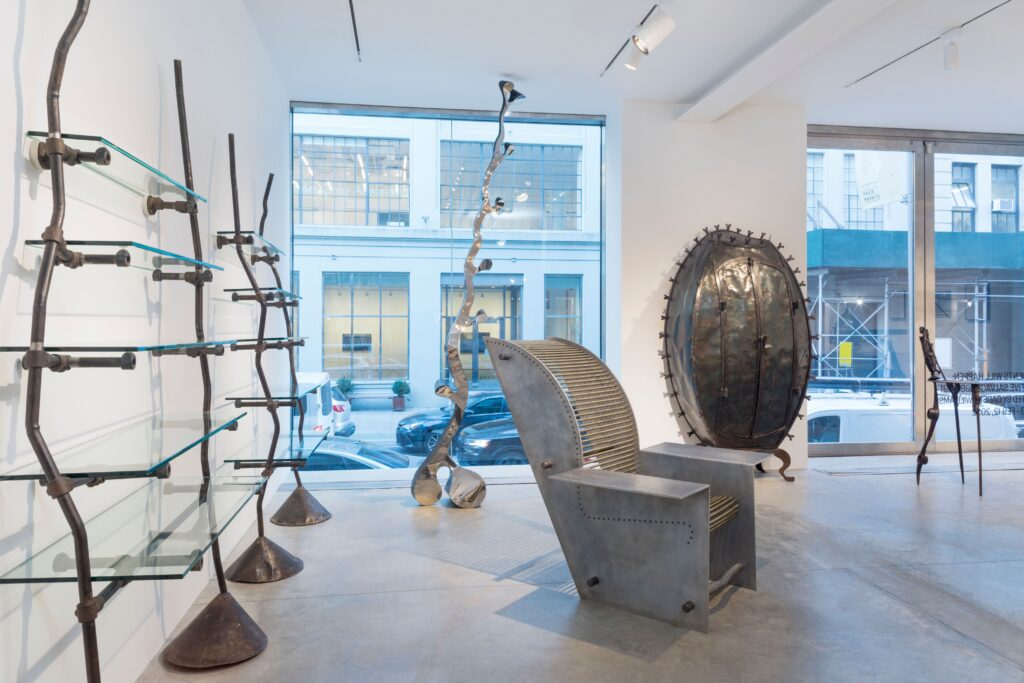

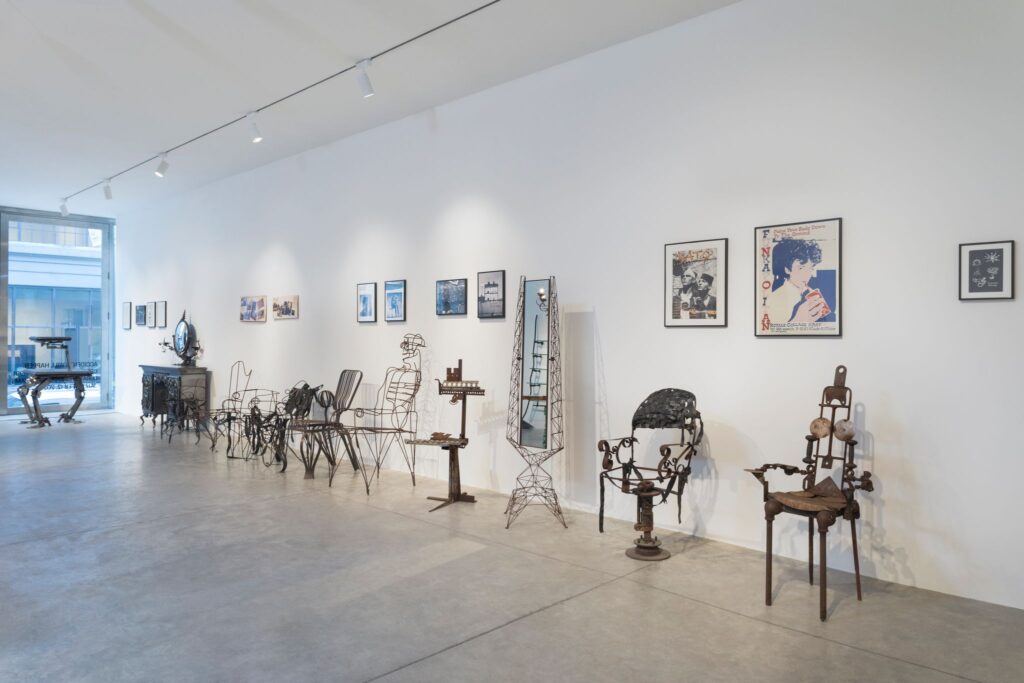
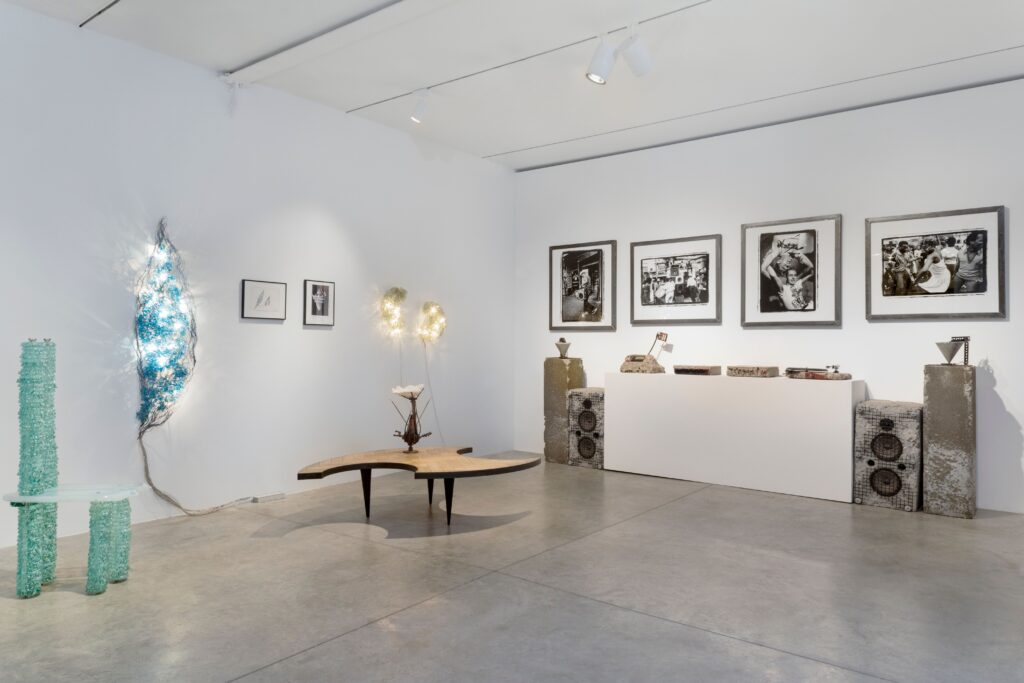

Hi Daniela, I met you a while back in nyc. I am an architect, (i design furniture as well vibekelichten.com) I met Danny lane in that period in his studio in London. I spent a day with my family getting to know Danny introduced by Ray King his friend, another well known artist working in philadelphia. Danny.s studio was the most innovative place making amazing commissions for private individuals as well as the AV museum. He and Ron Arab were partners having the same brutalist sensitivities till each of them parted ways. Danny lane had many smaller maquettes in his studio at the time for a commission for a giant sculpture of forged steel and I bought one that day. It is housed in a vitrine I created in his honor shown on my web site. Hope you enjoy this little trivia to your story. Shalom and best vibeke.
Of course I remember you and love your work. Thanks for sharing this story.